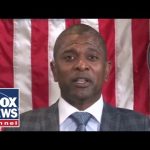**The Secret Service: Learning from Lessons of Lapses**
Recently, in the world of politics, there was an unsettling event that caught everyone’s attention: an assassination attempt against former President Trump in Butler, Pennsylvania, on July 13th. This incident raised significant concerns about the effectiveness of the Secret Service, the government agency tasked with protecting the president and ensuring their safety. In a candid reflection on this alarming occurrence, the acting director of the Secret Service acknowledged that a combination of failures led to a breach of security protocols, leaving many feeling rather uncomfortable about their level of vigilance.
While some members of the advance team took their duties seriously, others seemed to fall into a trap of complacency. It’s a bit like when someone forgets to put the lid on a jar of peanut butter and it spills everywhere – a tiny lapse can lead to a big mess! As the dust settled, the acting director insisted that, thankfully, no shots were fired during the golfing incident, and there were safety measures that worked as intended. However, the shadow of that near-miss loomed large, especially considering the high stakes involved in protecting not just the former president, but the integrity of national security.
One big issue that surfaced during this conversation involved the budget of the Secret Service, which is estimated to exceed a whopping $3 billion. You might think that such impressive numbers would mean top-tier protection, but it turns out the allocation of these funds raised eyebrows. Much of the budget is directed toward operations and support, leaving many wondering whether the dollars were well-spent. A notable portion goes toward various programs, including diversity and inclusion initiatives. Critics in Congress highlighted this diverting of funds, suggesting that perhaps protecting the former president should take precedence over additional programs.
Compounding the confusion surrounding funding, it became evident that cooperation between federal and local law enforcement has hit some rough patches. Florida Governor Ron DeSantis reported that his state investigators received little cooperation from federal agencies. This lack of teamwork is concerning, especially when the pieces of communication and information-sharing seem to be scattered like puzzle pieces. If the Secret Service and local authorities can’t get on the same page, it puts everyone involved at risk.
To remedy this, the hope rests on strengthening cooperation and improving communication. It’s crucial for all agencies involved in security to come together and ensure they have the same understanding of what is required. A well-coordinated team can better anticipate threats to the safety of high-profile individuals. The Secret Service will need to step up its game, stay in touch with local law enforcement, and apply all its resources effectively. After all, when lives are at stake, everyone should be on high alert to prevent another potentially avoidable situation.
As lessons are learned from past mistakes, the country can only hope for a proactive approach that prioritizes security over bureaucracy. If this warrants a reevaluation of priorities and better communication pathways, the nation may emerge stronger and more prepared for whatever may come next. Ultimately, accountability and readiness must reign supreme in ensuring the safety of all those who serve at the highest levels of government.




